| Year-round Resident | |
| Has Nested in Park |
Hairy Woodpecker
Picoides villosus
| Year-round Resident | |
| Has Nested in Park |
Downy and Hairy Woodpeckers are common year-round residents, and they have nested at Monticello Park. You have a good chance to see both at the park during the spring, with the Downy being more common.
Where to See Them in the Park
Both species are found on trees in any part of the park. Neither visits the stream often.
Physical Descriptions
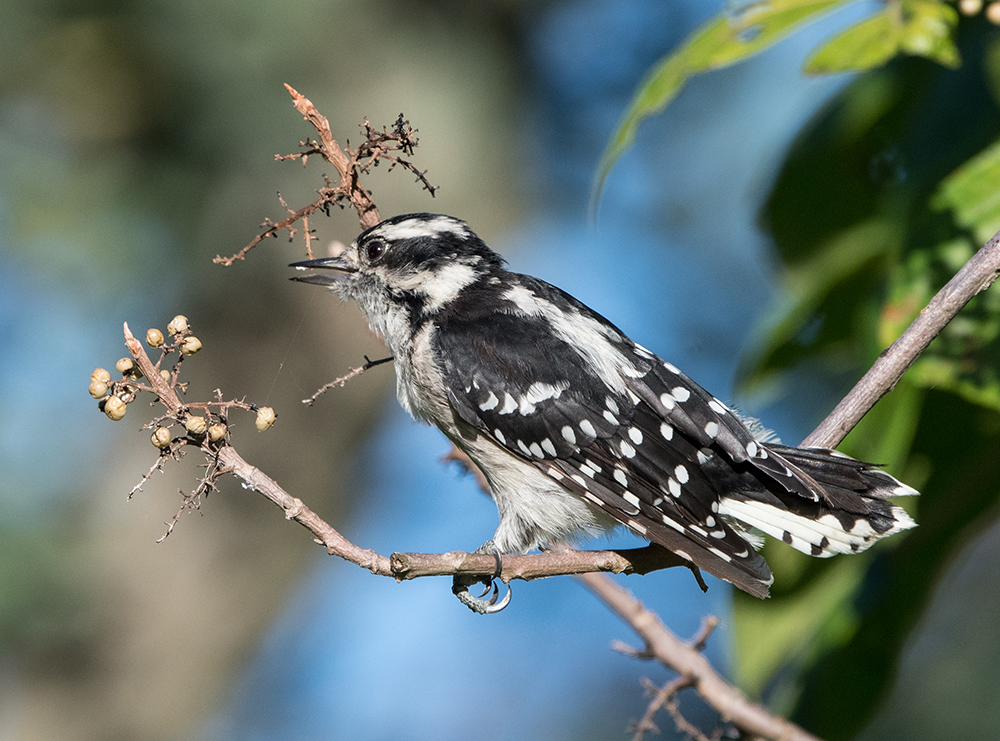
Downy Woodpeckers are the smallest of the seven woodpecker species regularly found in the Washington metro area. They are only a little larger than a titmouse. The length of the bill is shorter than the head. Downy Woodpeckers have black barring on the edge of the tail, but this can be difficult to see in the field.
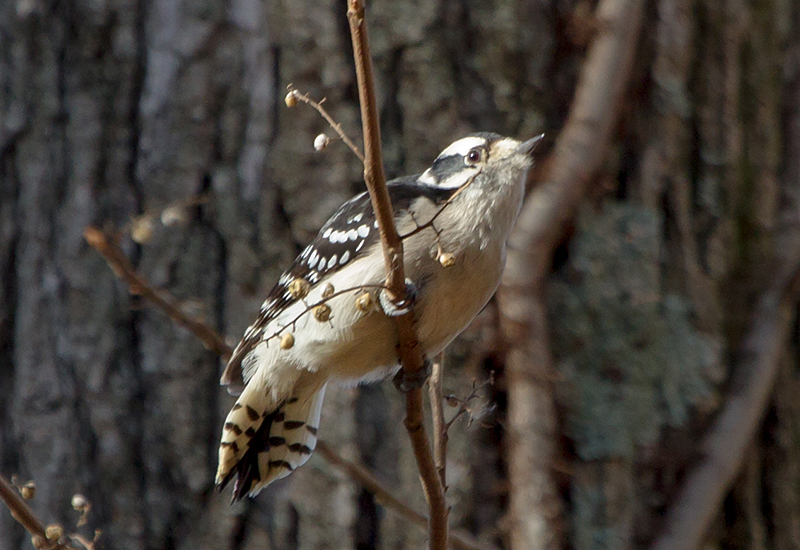
The barring is more pronounced on the underside of the tail, but the underside is usually up against a tree where it cannot be seen.
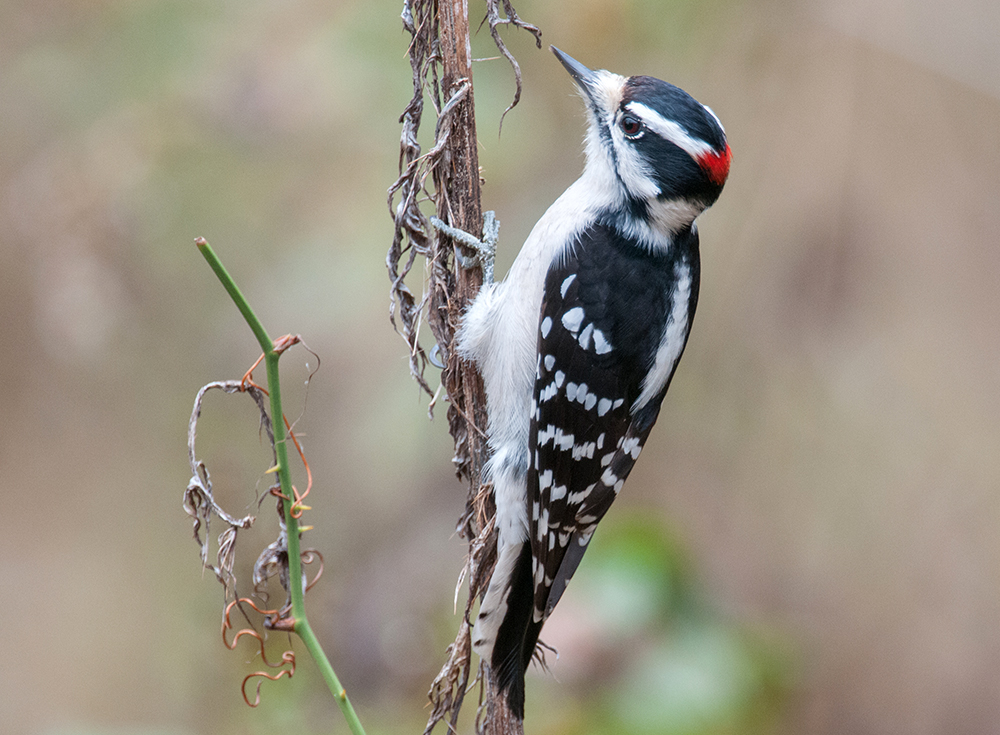
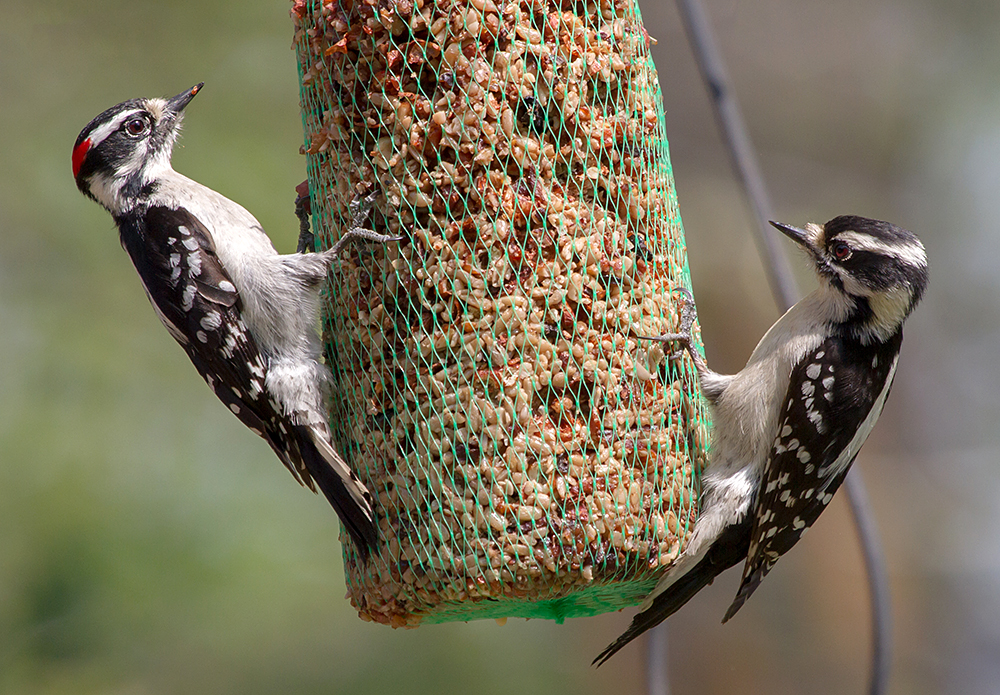
Downy males have red on the back of their head, while females do not.
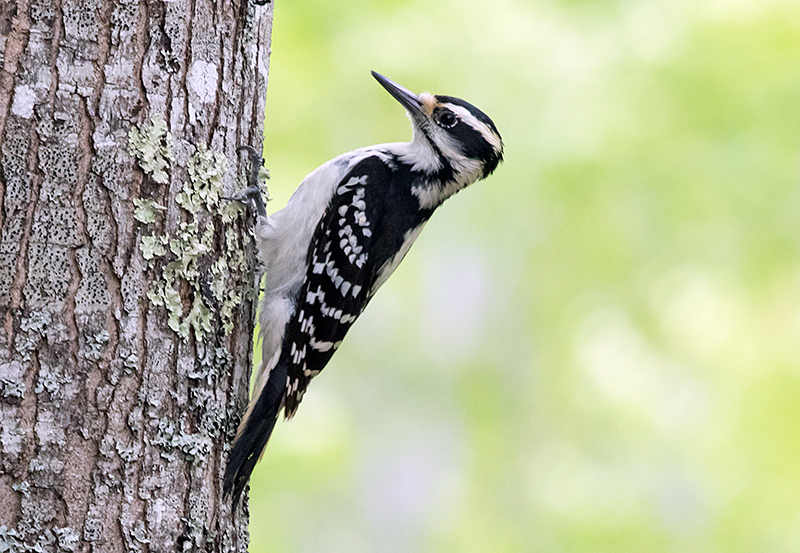
The plumage of the Hairy Woodpeckers is similar to the Downy's, but the Hairy Woodpecker is roughly 50 percent larger — about the size of a Red-bellied Woodpecker. The Hairy's bill is heavy and about as long as its head. The Downy has a roundish head, while the Hairy's head looks flatter.
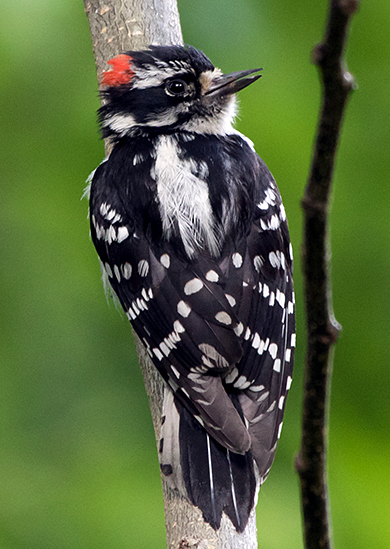
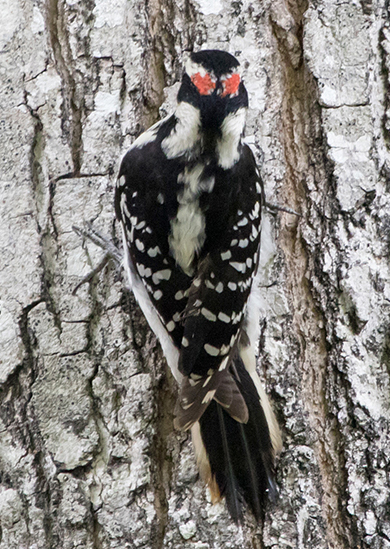
The Downy often forages on the branches of trees, while the Hairy tends to forage on the trunks. As with the Downy, the male Hairy has red on the back of his head, while the female does not. The downy has small black markings on the outer white tail feathers, while the Hairy's outer tail feathers are white with no black marks. Adults of both species show no variation between their spring and fall plumage.
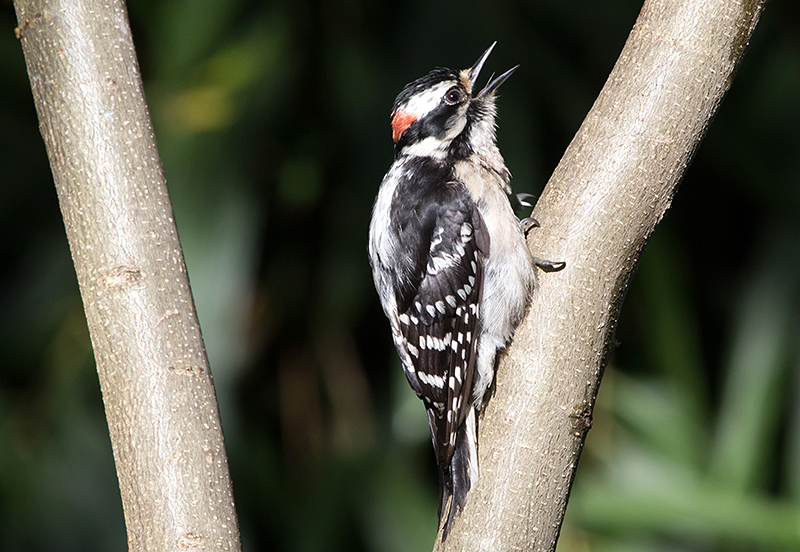
When woodpeckers forage, they often peck at bark and use their tongue to extract insects. The tongue is very long, and when retracted, it wraps around the woodpecker's brain. This helps to cushion the blows when the woodpecker bangs its bill onto a tree.
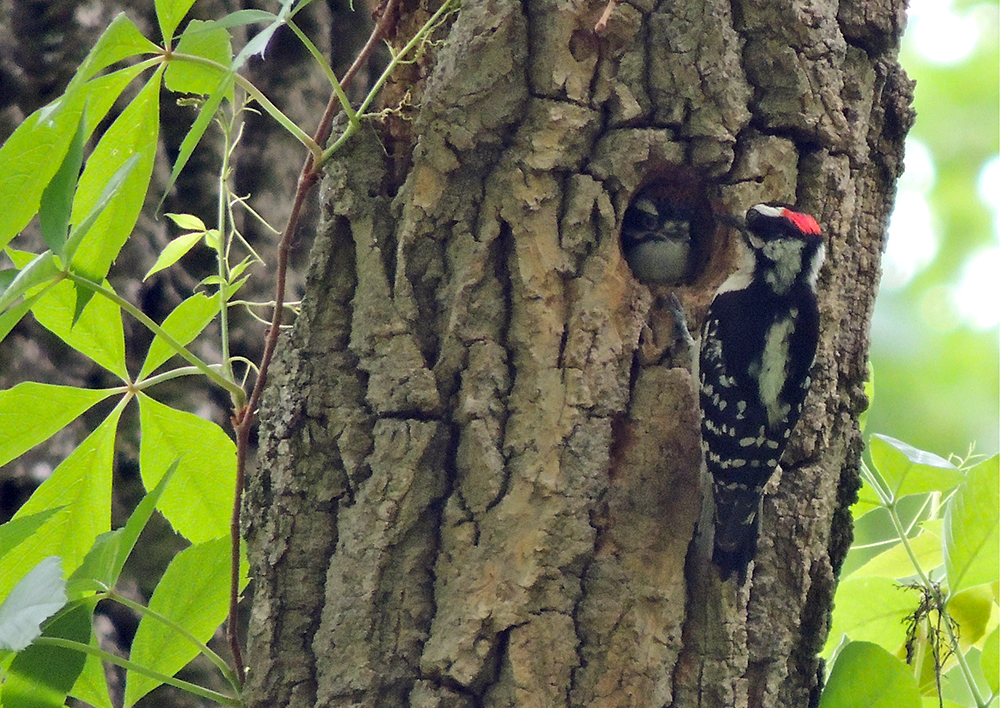
Monticello Park is a good place for woodpeckers to nest, because it has a lot of dead trees. Both the Downy and Hairy nest in tree cavities. One year, Hairy Woodpeckers nested in a tree just past the dog exercise area. Downy Woodpeckers have nested in various parts of the park. If a Downy pair does not select an existing nest hole, the male will do most of the excavating of a new hole. The female lays 4 to 5 eggs. Incubation lasts for 12 days, shared by the male and female. Downy Woodpecker chicks stay in the nest for roughly three weeks. During this time, the two parents make frequent trips to the nest hole to provide food and remove fecal sacs. At the end of three weeks, the parents stop bringing food so that the young will leave the nest. The young can fly as soon as they come out. The parents will feed the young for another week before the fledglings are encouraged to fend for themselves.
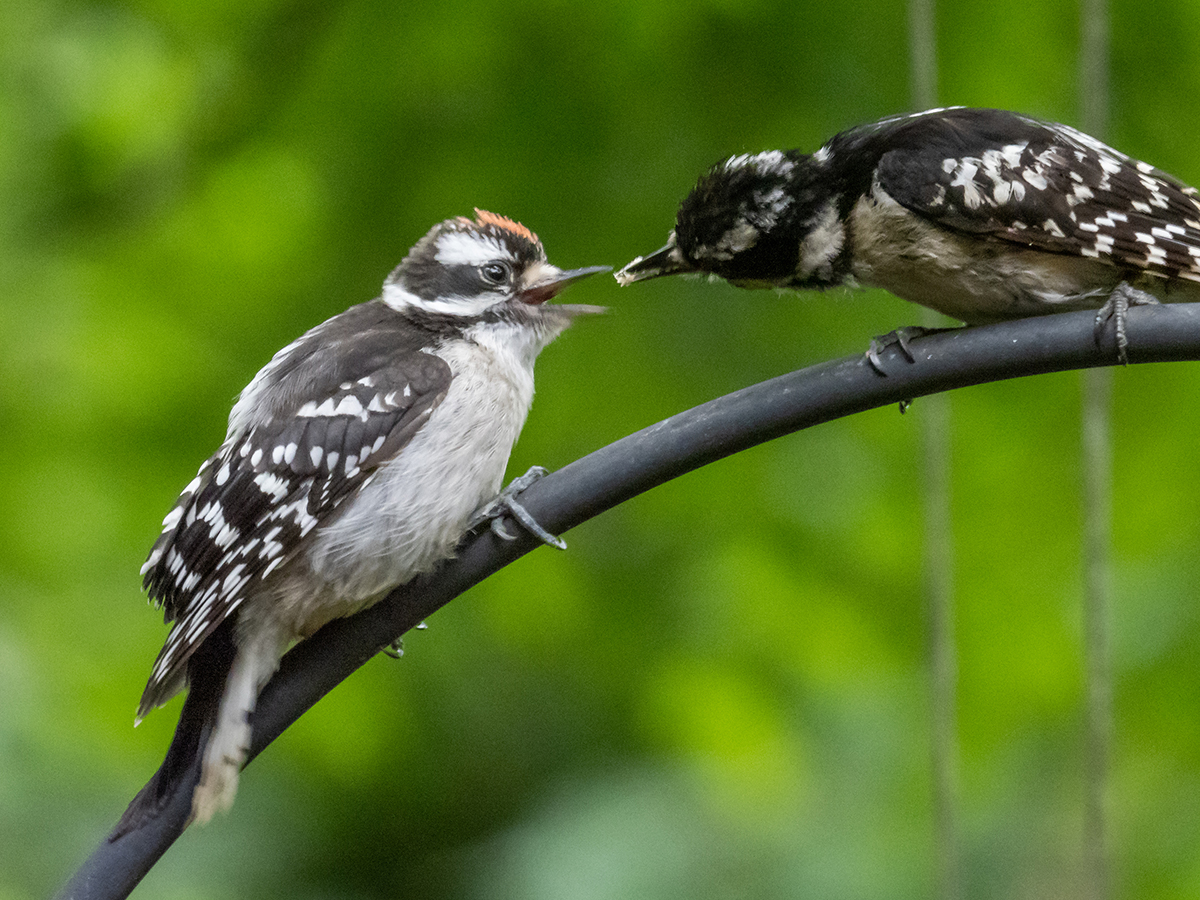
Juvenile Downy Woodpeckers have slightly duller plumage than adults. The feathers on the front of the head of a juvenile male Downy have red tips, so he appears to have a red crown rather than a red spot on the back of his head like an adult male. The number and position of the red tips can vary. The juvenile female Downy has little or no red on the top of her head. The heads of juvenile Hairy Woodpeckers are similar to the heads of juvenile Downy Woodpeckers, with the juvenile male Hairy having varying amounts of red on his crown and the juvenile female Hairy having little or no red.
Vocalizations
The call of the Downy is a high-pitched descending whinny, while the Hairy's corresponding call is a dry rattle. A call note of the Downy is a loud peek, while the corresponding note of the Hairy is a lower-pitched pick.
Hear the vocalizations and sounds of the Downy Woodpecker.
Hear the vocalizations and sounds of the Hairy Woodpecker.
Notes
Trying to identify woodpeckers by their drumming can be difficult. While each woodpecker species has something distinctive about the way it drums, not all woodpeckers drum the same way all the time. The sound of the drumming of a particular woodpecker might depend on whether it is trying to attract a mate, look for food, or excavate a nest hole. The sound of the drumming also will depend on the type of wood or other material on which the woodpecker is drumming. Seeing the woodpecker or hearing its call is a much safer way to identify it.
Origin of Names
Common Names: Downy from their plumage, suggesting they do not look mature. Hairy from their appearance. Woodpecker because they peck wood.
Genus Name: Picoides from the mythological figure Picus, who was turned into a woodpecker by the enchantress Circe.
Species Names: Pubescens means with the hairs of puberty, from the plumage. Villosus means hairy, from the shaggy appearance.
Downy Woodpecker video footage
Hairy Woodpecker video footage
Return to the Index
